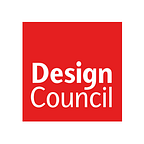Is the future of design powered by communities?
How community-led planning is shaping and creating sustainable places.
“Our houses all face each other, with only green spaces and paths separating us. We see our neighbours, we swap courgettes for carrots, we notice when someone may be struggling. There is a great sense of wellbeing from sharing.”
This was the vision set out by the residents of Houghton Barton and Bradmore, Teignbridge as part of their engagement in building their design code.
The design coding process is accelerating the shift towards a design-led approach to policy and planning. It focuses on expanding user-centred design and actively incorporating the needs of the planet at the outset.
How can you use design codes to design better?
1. Design radical visions
By engaging communities and stakeholders in conversations about the future of their area, design codes can be truly ambitious, bringing multiple priorities together into a compelling vision. This process provides a chance for sustainability to be put at the forefront of upcoming policies, helping to achieve truly resilient places.
Key example: Barking and Dagenham’s Be First design code
This code leveraged the climate agenda, whilst preserving and enhancing local character through improving existing housing stock, instead of building new.
But it’s not just local planning teams who can learn from coding. Beyond our work on codes, our team has also been contributing to the Public Design Review, a wider audit of the use of design in national and local government revealing the need for better use of design in local government.
The design coding process could accelerate the shift towards a design-led approach to policy and planning, expanding the focus of traditional user-centred design to include the needs of the organisation and the planet. Here are three key aspects of the coding process where design is playing a key role in creating better public services, places, and policies.
2. Co-create policy
Delivering complex visions require a systemic lens and joint effort. The coding process champions engagement across a broad range of stakeholders, creating a space where local authority officers, councillors, community members and developers can come together to reach a consensus.
Key example: Teignbridge’s citizen panel
During their consultation with community members, they were significantly upskilled and engaged that they formed a citizen panel that created an enhanced feedback loop using a communal language, meaning all stakeholders could understand the priorities and challenges.
This approach marked a shift away from the traditional culture of siloed working within local authorities and allowed for better engagement from the community and thereby, better design.
3. Use responsive documents
The new design codes have streamlined the traditionally dense planning documents into an accessible and user-friendly step-by-step process, supported by a collection of learning materials and case studies.
